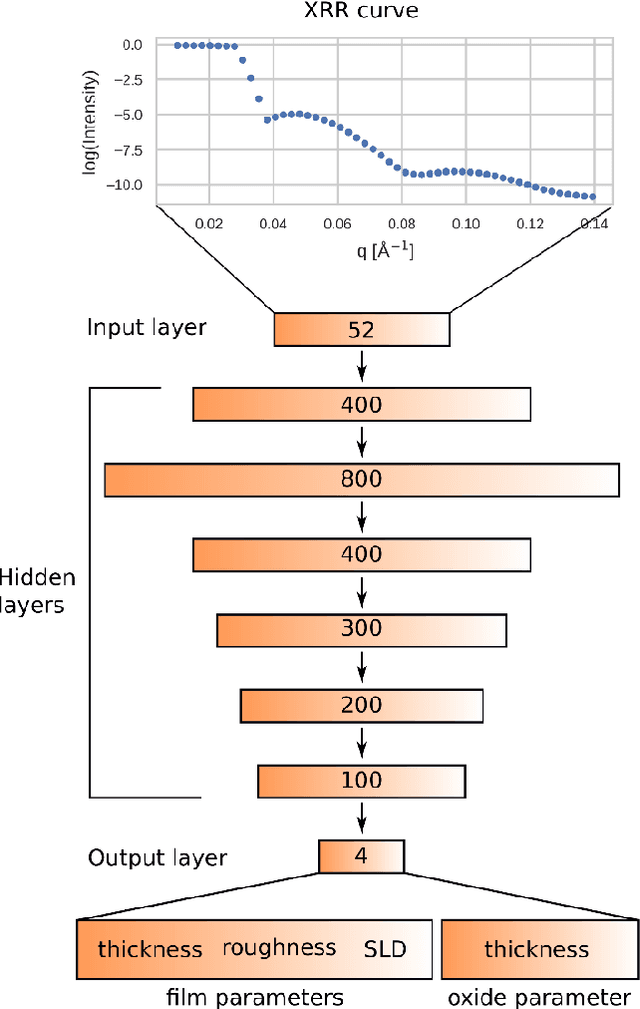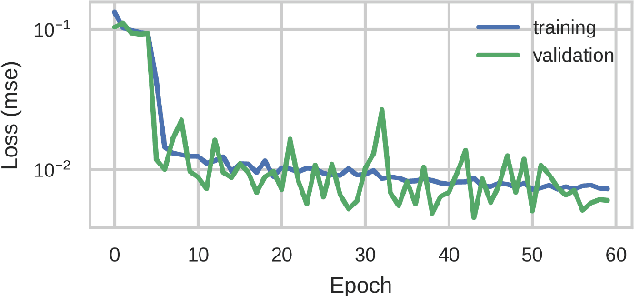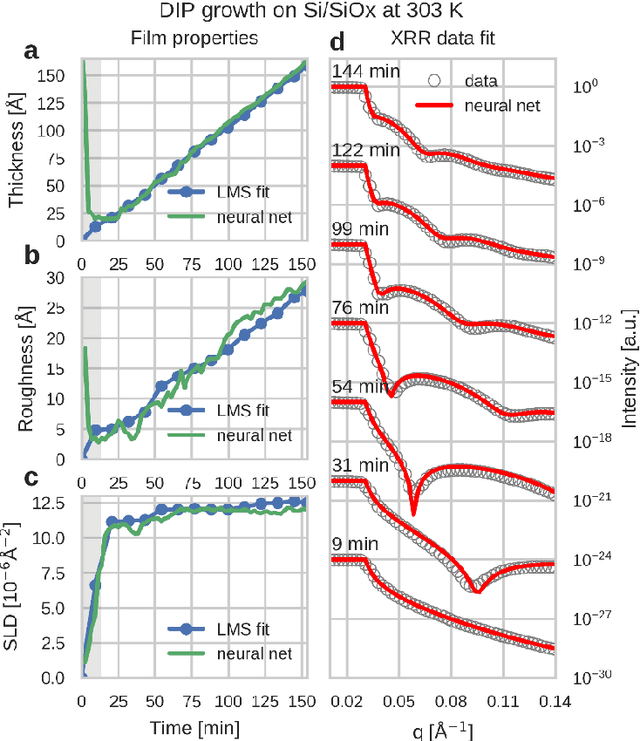Fast Fitting of Reflectivity Data of Growing Thin Films Using Neural Networks
Paper and Code
Oct 07, 2019



X-ray reflectivity (XRR) is a powerful and popular scattering technique that can give valuable insight into the growth behavior of thin films. In this study, we show how a simple artificial neural network model can be used to predict the thickness, roughness and density of thin films of different organic semiconductors (diindenoperylene, copper(II) phthalocyanine and $\alpha$-sexithiophene) on silica from their XRR data with millisecond computation time and with minimal user input or a priori knowledge. For a large experimental dataset of 372 XRR curves, we show that a simple fully connected model can already provide good predictions with a mean absolute percentage error of 8-18 % when compared to the results obtained by a genetic least mean squares fit using the classical Parratt formalism. Furthermore, current drawbacks and prospects for improvement are discussed.
 Add to Chrome
Add to Chrome Add to Firefox
Add to Firefox Add to Edge
Add to Edge